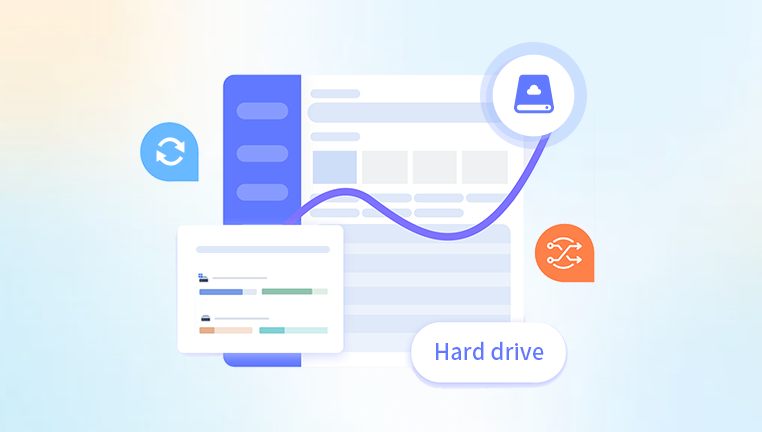I.External Hard Drive
Seagate is a well known brand in the hard drive industry, and its external hard drives are widely used for data storage and backup. However, like any other storage device, Seagate external hard drives can experience failures, leading to data loss. Data loss can be a frustrating and costly experience, especially if the data is important. Therefore, it is essential to understand how to recover data from a Seagate external hard drive.
II. Reasons for Seagate External Hard Drive Failure
Physical Damage
Dropping or Impact: External hard drives are often portable, and they can be accidentally dropped or subjected to impact. This can cause damage to the hard drive's internal components, such as the disk platters, read - write heads, or the motor.
Electrical Issues: Power surges, electrostatic discharge, or faulty power adapters can damage the hard drive's electronic components. This can lead to issues such as the hard drive not spinning up or being recognized by the computer.

Logical Damage
Virus or Malware Attacks: Viruses, malware, or ransomware can infect the hard drive and corrupt the file system or delete important files. These malicious programs can also encrypt the data, making it inaccessible.
File System Errors: Improperly ejecting the external hard drive, sudden power outages, or software glitches can cause file system errors. This can lead to issues such as corrupted directories, missing files, or an unreadable file system.
Accidental Deletion or Formatting: Users may accidentally delete important files or format the external hard drive, thinking it was empty or during a system setup process.
III. Signs of a Failing Seagate External Hard Drive
Strange Noises: If the hard drive makes clicking, grinding, or buzzing noises, it could be a sign of a mechanical problem. These noises may indicate that the read - write heads are having trouble accessing the disk or that the motor is failing.
Slow Performance: If the hard drive takes a long time to access files, copy data, or if there are frequent delays or freezes during operation, it could be a sign of a problem. This could be due to a variety of reasons, including bad sectors on the disk or a failing controller.
Error Messages: If the computer displays error messages such as "Disk not found", "I/O error", or "Corrupt file system", it indicates that there is a problem with the external hard drive. These error messages can provide clues about the nature of the problem.
Not Recognized by the Computer: If the external hard drive is not recognized by the computer when it is plugged in, it could be due to a hardware or software issue. This could be caused by a faulty USB cable, a damaged port, or a problem with the hard drive's firmware.
IV. Pre - Recovery Steps
Check the Connections: Make sure that the external hard drive is properly connected to the computer. Try unplugging and replugging the USB cable, and if possible, try using a different USB port. Also, check if the power adapter (if applicable) is working properly.
Check for Driver Updates: Ensure that the computer has the latest drivers for the external hard drive. Outdated or incorrect drivers can cause compatibility issues and prevent the hard drive from being recognized. You can usually find the latest drivers on the Seagate website.
Scan for Viruses and Malware: Use a reliable antivirus or anti - malware program to scan the external hard drive for any infections. If the hard drive is infected, remove the viruses or malware using the appropriate tools.
Run Disk Check Utilities: Most operating systems have built - in disk check utilities. For example, in Windows, you can use the CHKDSK utility to check for file system errors and repair them if possible. In Mac, you can use Disk Utility to verify and repair the disk.
V. Data Recovery Methods
Using Built - in Recovery Tools
Windows Previous Versions: If you are using a Windows computer and the external hard drive is formatted with NTFS, you can try using the Previous Versions feature. This feature allows you to access previous versions of files and folders that were automatically saved by the system.
Mac Time Machine: If you are using a Mac and have been backing up the external hard drive using Time Machine, you can restore the data from a previous backup. Time Machine creates regular backups of your files, and you can easily recover deleted or lost files using the Time Machine interface.
Using Third - Party Recovery Software
Drecov Data Recovery is a powerful and user-friendly software tool designed to help individuals and businesses retrieve lost, deleted, or corrupted files from a wide variety of storage devices. Whether you’ve accidentally deleted important documents, formatted your hard drive, or encountered system crashes, Drecov Data Recovery provides a reliable solution to recover data efficiently.
One of the standout features of Drecov Data Recovery is its broad compatibility. It supports recovery from hard drives, USB flash drives, SD cards, external drives, SSDs, and even cameras or mobile devices with mounted storage. The software is capable of retrieving a wide range of file types, including photos, videos, audio files, emails, documents, and more.
The user interface is designed with simplicity in mind, making it easy for both beginners and advanced users to navigate. With just a few clicks, users can initiate a scan, preview recoverable files, and select the items they want to restore. Drecov Data Recovery offers both quick and deep scan modes, ensuring that even files buried deep within the storage media can be recovered.
Professional Data Recovery Services
When to Consider Professional Services: If the above methods do not work or if you suspect that there is a physical problem with the hard drive, it may be necessary to seek professional data recovery services. Professional data recovery companies have the expertise and specialized equipment to handle complex hard drive failures, such as head crashes, motor failures, or damaged circuit boards.
Choosing a Reputable Service Provider: When choosing a professional data recovery service, it is important to do your research. Look for companies with a good reputation, experienced technicians, and a clean room facility. You can also read reviews and ask for recommendations from others who have used their services.
VI. Recovery Process for Different Scenarios
Recovering Deleted Files
Using Recovery Software: If you have accidentally deleted files from the Seagate external hard drive, start by using a data recovery software. Install the software on your computer (not on the external hard drive) and run it. Select the external hard drive as the drive to scan. The software will then search for deleted files and display them in a list. You can preview the files to make sure they are the ones you want to recover and then select the files to be recovered. Save the recovered files to a different location on your computer, not back to the external hard drive, to avoid overwriting any remaining data.
Recovering from a Formatted Drive
Using Specialized Software: If the external hard drive has been accidentally formatted, you can still try to recover the data. Some data recovery software has specific features for recovering from formatted drives. For example, EaseUS Data Recovery Wizard has a "Format Recovery" option. Select this option and then choose the formatted external hard drive. The software will scan the drive to find the lost partitions and files. It may take some time depending on the size of the drive and the amount of data. Once the scan is complete, you can preview and recover the files as you would with deleted file recovery.
Recovering from a Corrupted File System
First, Try to Repair the File System: As mentioned earlier, you can use the built - in disk check utilities to try to repair the file system. If this does not work, you can use data recovery software. Some software, like Disk Drill, can detect and repair certain file system errors while recovering the data. Run the software and select the external hard drive with the corrupted file system. The software will attempt to recover the files while also trying to fix any file system issues it encounters.
VII. Preventive Measures
Regular Backups: The best way to prevent data loss is to regularly back up your data. You can use external hard drives, cloud storage, or network - attached storage (NAS) devices to create backups. Set up a backup schedule and make sure to include all important files and folders.
Proper Handling and Storage: Handle the external hard drive with care. Avoid dropping it, exposing it to extreme temperatures or humidity, and keep it away from magnetic fields. When not in use, store it in a safe and dry place.
Use of Surge Protectors: To protect the external hard drive from power surges, use a surge protector. Plug the hard drive's power adapter into the surge protector, which will help prevent damage from sudden voltage spikes.
Keep Software and Drivers Updated: Regularly update the operating system, antivirus software, and device drivers. This helps to ensure compatibility and security, reducing the risk of software - related issues that could lead to data loss.




